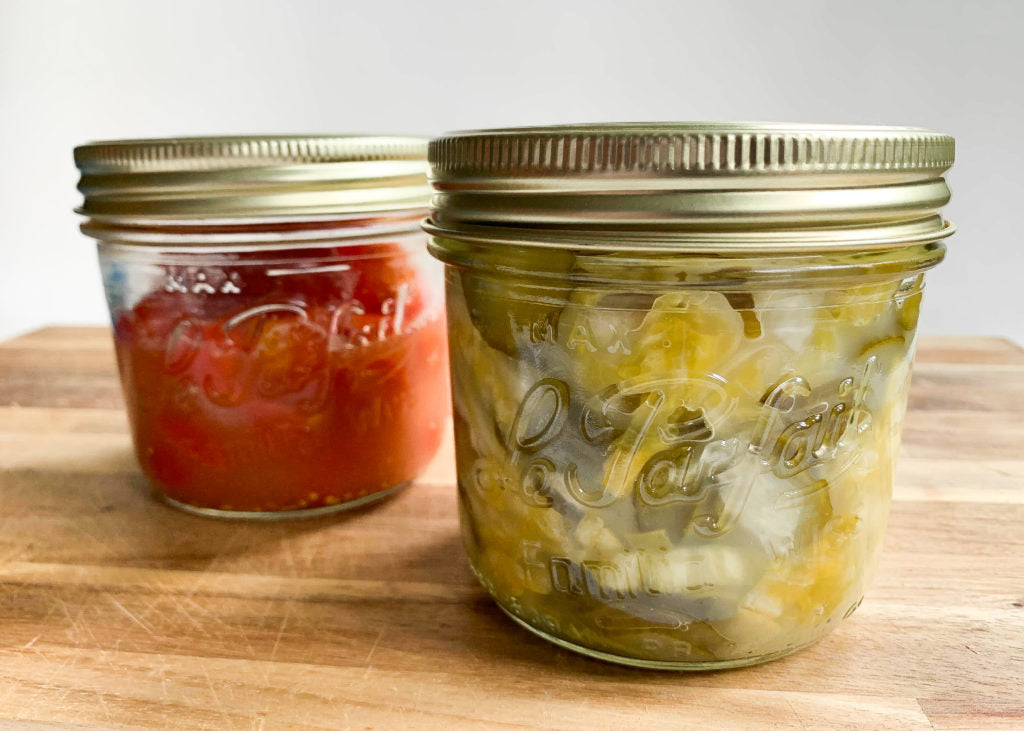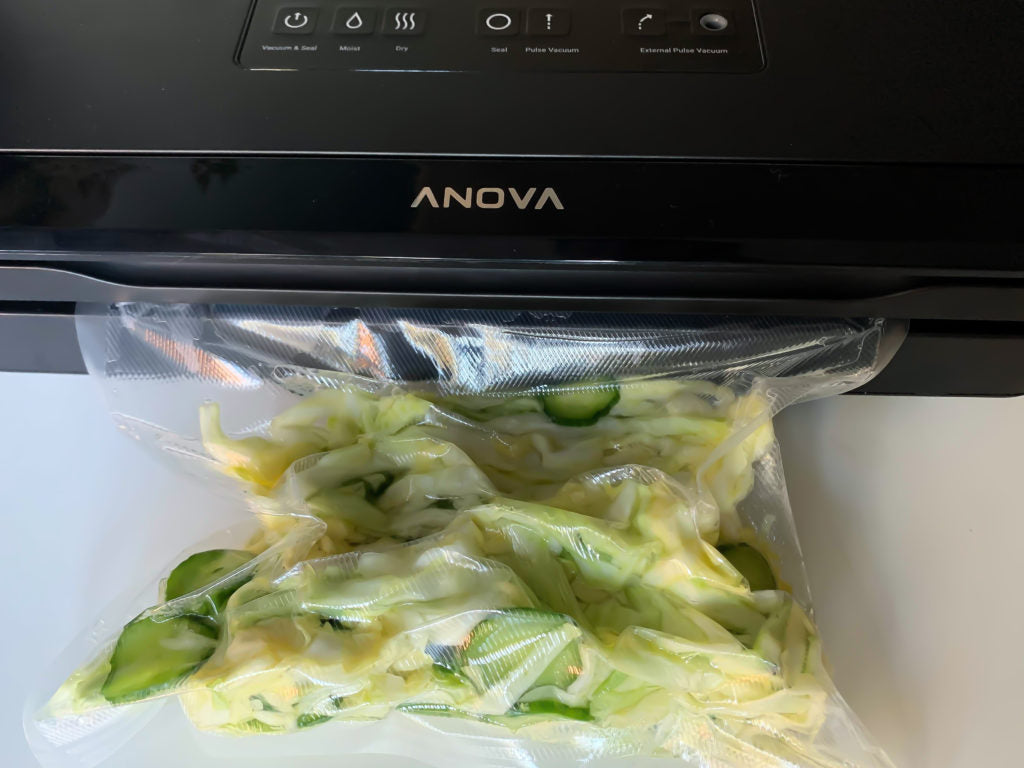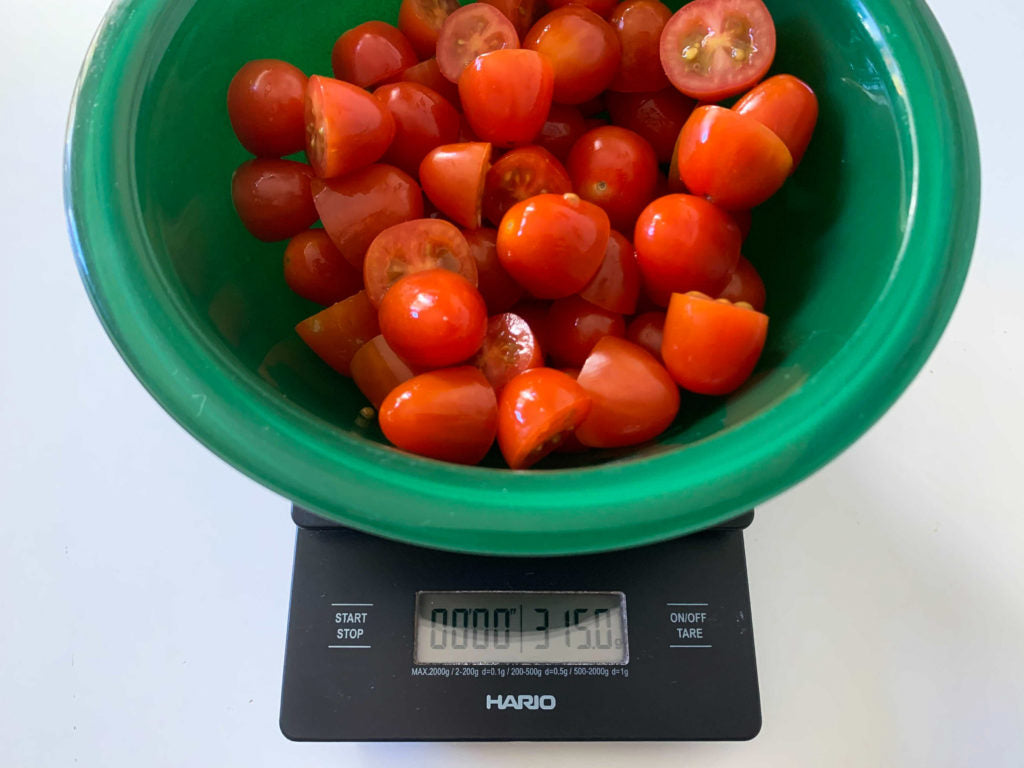How to Lacto Ferment Basically Anything!
Does the thought of fermenting food confuse you, scare you, or maybe both? C’mon, it’s 2021, fermentation is totally having a moment while a majority of us are looking for new hobbies at home, and it’s an incredibly easy way to bring funky, delicious, umami to any meal – if you have the right equipment.
Sous vide fermentation - the right equipment:
- Vacuum sealer
- Vacuum sealer bags
- Non iodized salt
- Whatever fruit/veg you plan on fermenting
- Sharp kitchen knife
- Kitchen scale
So Let's Talk Ferments!
Lactic acid, or “lacto”, fermentation occurs when you harness the natural power of lactic acid bacteria (present on the skins of fruits, veggies, and even humans) to convert sugars into lactic acid. This results in the familiar sharpish, kinda funky, vinegary, umami-tinged sourness we taste in things like sauerkraut and kimchi. But guess what – you can do it with just about any fruit or vegetable, and today (right now) I’m going to show you just how easy it is. Then, not unlike myself, you’ll inevitably be hooked on the fun and funky hobby of home ferments. Let me start by saying that as much as I’d love to take credit for this super-gratifying and ridiculously easy method of fermentation, I can’t. I’ve dragged this method from Rene Redzepi and David Zilber’s book “The Noma Guide to Fermentation” and I can’t recommend it enough. Armed with that book, an Anova Precision® Vac Sealer, and maybe some mason jars, there’s pretty much nothing you can’t ferment. The world is your kimchi.
Choosing Your Ferment(s)
Like I said, just about any fruit or veg will do. As per my experience, foods that are higher in sugar content and juicier will tend to ferment a bit quicker than their counterparts, but as a ballpark figure you’re looking at about 4-7 days to lacto ferment just about anything. For this example I’m just doing 2 separate ferments: cherry tomatoes, and a combination of cabbage and persian cucumber to make a simple sauerkraut.
Step 1: Chop or not
In general, little teensy fruits and veg (blueberries for example) can be left whole, while larger fruits and vegetables will want to be cut down into smaller portions. For the purposes of this batch, I simply halved the cherry tomatoes, and thinly sliced the cabbage/persian cucumbers I’m turning into a kraut. With bigger fruits with pits like plums, peaches, etc, you’ll want half them and pull the pits out before fermenting.
Step 2: The big weigh in
Here is the most complicated part of the entire process – simply weighing things (in grams.) So, after you’ve chopped your fruits and/or veggies, you’re just going to add salt. How much salt, you ask? 2% of the total weight of your food.
This is simply calculated by weighing out your food to be fermented (in grams) and multiplying that number by .02 – the resulting number is how much salt you’ll be adding to said food for fermenting. Add that amount of salt to the fruit of vegetables you’ll be fermenting and toss in bowl or mix by hand inside vac bag to evenly distribute. For example: - I had 315G of tomatoes. 315 x .02 = 6.3, so I add 6.3G of salt to my tomatoes. - I had 435G of cabbage/cucumber. 435 x .02 = 8.7, so I add 8.7G of salt to my kraut mixture.
Step 3: Seal and wait
Just like it says, there’s nothing left to do but seal your ferments up and wait for them to...well, ferment! You’ll want to keep them at room temperature, in the range of about 21°C or 70°F. If your room is slightly warmer or cooler, it shouldn’t be a big deal but will keep in mind that a warmer environment will accelerate the fermentation process and a cooler room will have the opposite (slowing) effect. It’s also a great idea to label your vac-seal bags with the date you sealed them. Most fruits and vegetables will only take about a week to reach the maturity level we’re looking for.
Step 4: The moment of truth
So how do you know when your ferment has reached our desired levels of fermentation? It will literally let you know, just look for the fully inflated bag. If it’s been right around a week and your bag is completely or almost completely filled with air, congratulations – it’s time to reap the fruits (or vegetables) of your labor.
Step 5: Enjoy and repeat
I’ve gotta say, while the use case for sauerkraut is pretty straightforward, the tomatoes are my favorite thing to lacto ferment because they pull double duty between the actual tomato halves themselves and the fermented tomato juice that’s produced as a byproduct. The tomato halves are absolute umami flavor bombs for things like pizza, bruschetta salads, etc, while the fermented tomato juice is endlessly useful for adding depth to things like dressings and sauces, or even using it as a solutions to quick pickle other vegetables in! The thing is, this process is so exciting because it brings so many different flavors out of a wide variety of foods to expose elements we never even knew were there! It’s worth it to experiment around not just with different fruits and vegetables but also with different temperatures for different durations of time, to develop a ferment that is entirely your own.










3 comments
Made fermented cherry tomatoes for Thanksgiving, everyone loved them, so delicious. I put them on top of cheesy mashed potatoes, just perfection.
So excited about trying this fermentation process! Claudia, I also love the sous vide, would love to trade notes on how to ferment caco, I can share my cultured veggie recipes.
I love my sous vide and would like to use it for fermenting cacao in the chocolate making process. About 3-4 Lbs. worth.
Could be in Mason jars. Do you think it would work? Temperature at 113–131 F